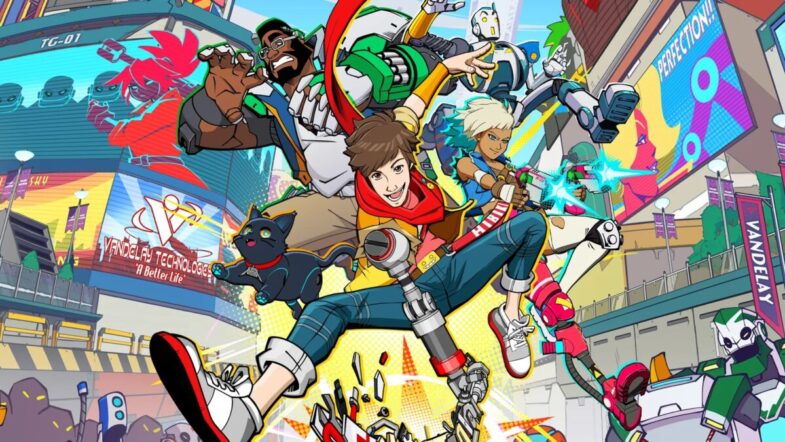How Hi-Fi Rush Inspired Me to Develop Action Games
3D action games have become somewhat of a rarity these days, with titles like Devil May Cry 5 and Bayonetta 3 standing as the exceptions. As someone who still finds myself searching eBay for titles like Nihilistic Software’s Conan or Creative Assembly’s Viking: Battle for Asgard to satisfy that “golden age” nostalgia, I am always delighted when Tango Gameworks – known for their work in horror genre – surprises me with something as rich as Hi-Fi Rush.
Hi-Fi Rush stands out with its rhythm combat system, asking players to manage combos, summons and dodges while keeping their button inputs time with the music. The action moves fast as players engage in parries against enemies with complex patterns as well as colorful bosses full of charisma — without ever compromising its dedication to keeping time. “While there are upgrades, perks and special moves available, your progress will only accelerate as you become better at fighting along with the beat,
These days, action games that don’t incorporate RPG or adventure elements are rare. Even action game giants from the past like Team Ninja have turned towards action RPGs as their new mainstay – three titles in particular have set this trend: God of War, Batman: Arkham Asylum and Dark Souls.
Ninja Gaiden made a major impact with its 3D action title, taking adventure elements from Devil May Cry while amplifying speed, tension and aggression. However, with DMC2’s critical failure, the future of 3D action design remains uncertain.
Devil May Cry set the bar for 3D action game development, setting the foundations for movement, combat and enemy design in three dimensions. Between its release in 2001 and God of War’s release in 2005, players eagerly awaited developers to incorporate its innovations. DMC3 followed shortly thereafter in early 2005, increasing both difficulty and depth compared to its predecessor; however shortly thereafter God of War overtook both in sales and long-term influence; today many more games play like God of War than DMC3, though few play like DMC3.
God of War offered an easier template to copy than DMC games; it took many of their innovations and refined them for maximum impact. Devil Trigger became Rage of the Gods, featuring an automatic damage boost mode that cannot be stopped once activated. Quick-time events also added a modern touch, allowing viewers to experience cinematic play regardless of skill or mastery level. Most significantly though, adventure mechanics reflected recent advancements within that genre – director David Jaffe specifically citing Ico as his primary influence.
When considering titles to win Game of the Year at The Game Awards or BAFTA Games Awards, many titles in this genre often make the cut: The Last of Us and Part II, Uncharted 4, God of War 2018, Breath of the Wild etc. This dominance can be traced back to God of War’s design decisions which simplified action while increasing adventure immersion and storytelling – not that this is bad design by any means — it just doesn’t give players much hope if Sekiro were more commonplace instead of an exception.
Action RPGs are a major trend at award shows, often winning as often as action adventures do. Games such as Mass Effect 2, Elden Ring and The Witcher 3 feature RPG mechanics alongside strong action design; budget titles like El Shaddai: Ascension of Metatron or God Hand have been replaced by Scarlet Nexus and Nioh instead, which feature strong action design but incorporate RPG “numbers.” Even Norse God of War games include stats, builds and perks alongside their strong action design.
Batman: Arkham games had a brief but significant reign as the gold standard in combat design for some time. “Flow” combat took positioning out of the player’s control and allowed them to focus solely on countering enemy attacks with counters, stuns and strikes of their own. While this system proved short lived, properties like Batman and The Lord of the Rings were able to transplant it with critical and commercial success – due to so many deadlines! With such hype around these franchises it’s no surprise publishers took advantage of this hype at their peril.
But then a game like Hi-Fi Rush comes along like an epiphany in the course of an afternoon, washing away any oily pessimism you may have had before that.
Hopes of a return of “just” action games can be dim. Games like Bayonetta or Sekiro often capture attention but fail to inspire further works in their genre, leaving developers with little incentive to innovate further. That being said, creating such games where progression, balance, and difficulty scaling are managed entirely by player skill is no easier – no numbers, puzzles or unskippable cutscenes to dilute its strength.







